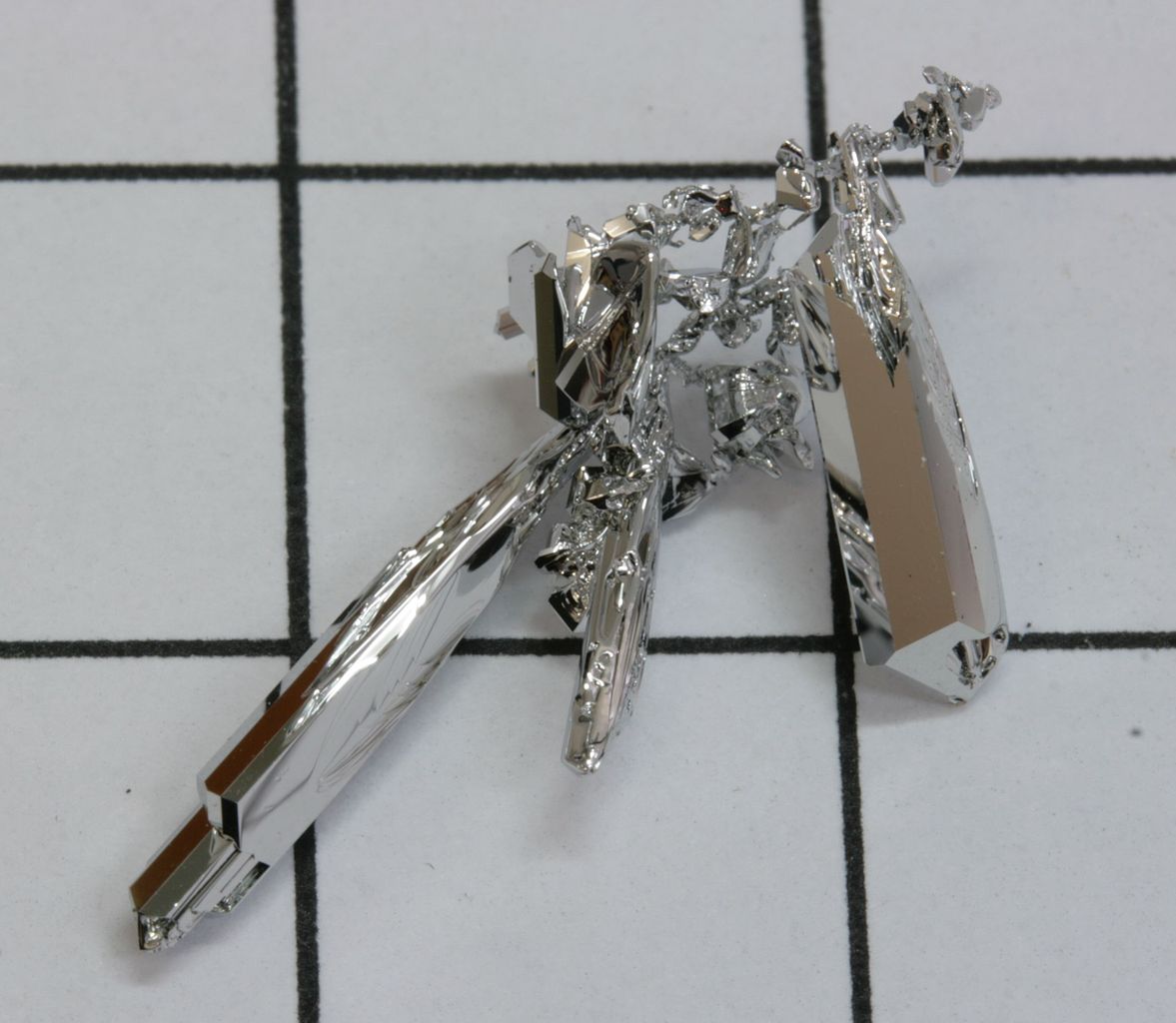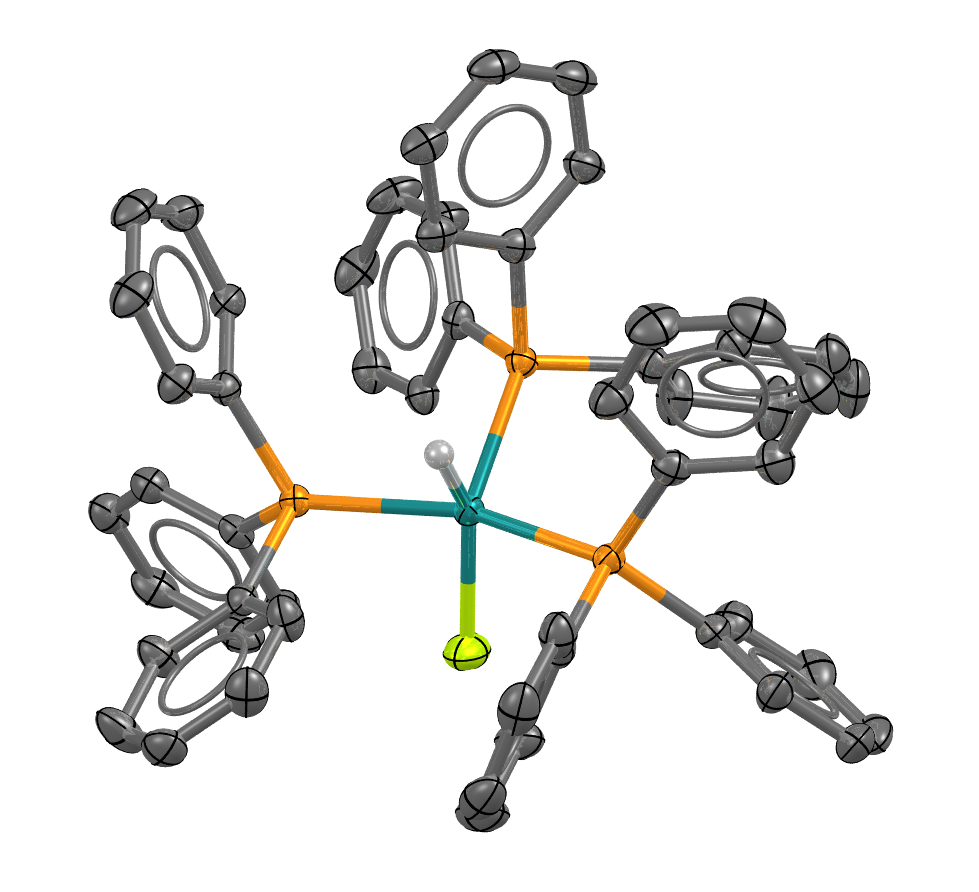Ruthenium
Ruthenium:

Gas phase grown crystals of ruthenium metal
Facts about Ruthenium:
- Ruthenium: A shiny, silvery metal.
- Fun fact about Ruthenium: Ru is a rare transition metal in the platinum group of the periodic table. Ru was discovered in 1844 by Karl Ernst Claus, who named it after the Latin name of his homeland, Ruthenia, Russia.
- Chemical symbol: Ru
- Atomic number: 44
A crystal structure containing Ruthenium:

This structure, Ru(PPh3)3HF, completed the family of known Ru(PPh3)3H(halide) complexes 50 years after Geoffrey Wilkinson (Chemistry Nobel Laureate, 1973) reported Ru(PPh3)3HCl
Facts about this structure:
- Formula: C54 H46 F P3 Ru, C6 H6
- Structure name: fluoro-hydrido-tris(triphenylphosphine)-ruthenium
- Fun fact about the structure: The Pax-Ru-Pax angle is similar to that found in the chloride, bromide and iodide derivatives
- CSD refcode: TIKWIW (What’s this?)
- Associated publication: Mateusz K. Cybulski, Caroline J. E. Davies, John P. Lowe, Mary F. Mahon, Michael K. Whittlesey, Inorganic Chemistry, 2018, 57, 13749., DOI: 10.1021/acs.inorgchem.8b02286
More about Ruthenium:
Ru is a rare transition metal in the platinum group of the periodic table. Ru was discovered in 1844 by Karl Ernst Claus, who named it after the Latin name of his homeland, Ruthenia, Russia. Ru has wide ranging uses. In the electronics industry it is used in chip resistors and electrical contacts, as it hardens Pt and Pd alloys. In the chemical industry it is used as an anode coating in the production of chlorine and in catalysts for the production of ammonia and acetic acid. Even reaching the world of biology Ru coordination complexes are being researched as anti-cancer drugs.
Learn More About the International Year of the Periodic Table (IYPT) in Crystals Project:
This project (#IYPTCrystals) is part of the International Year of the Periodic Table celebration (#IYPT2019), read more about the project here.
You can follow us on social media; search for #IYPTCrystals or follow The CCDC on X @ccdc_cambridge on Facebook ccdc.cambridge, on Instagram ccdc_cambridge or on YouTube CCDCCambridge.
Understand some of the terms and concepts used with our Frequently Asked Questions page here.
A 3D visualization showing Ruthenium in real crystal structures: